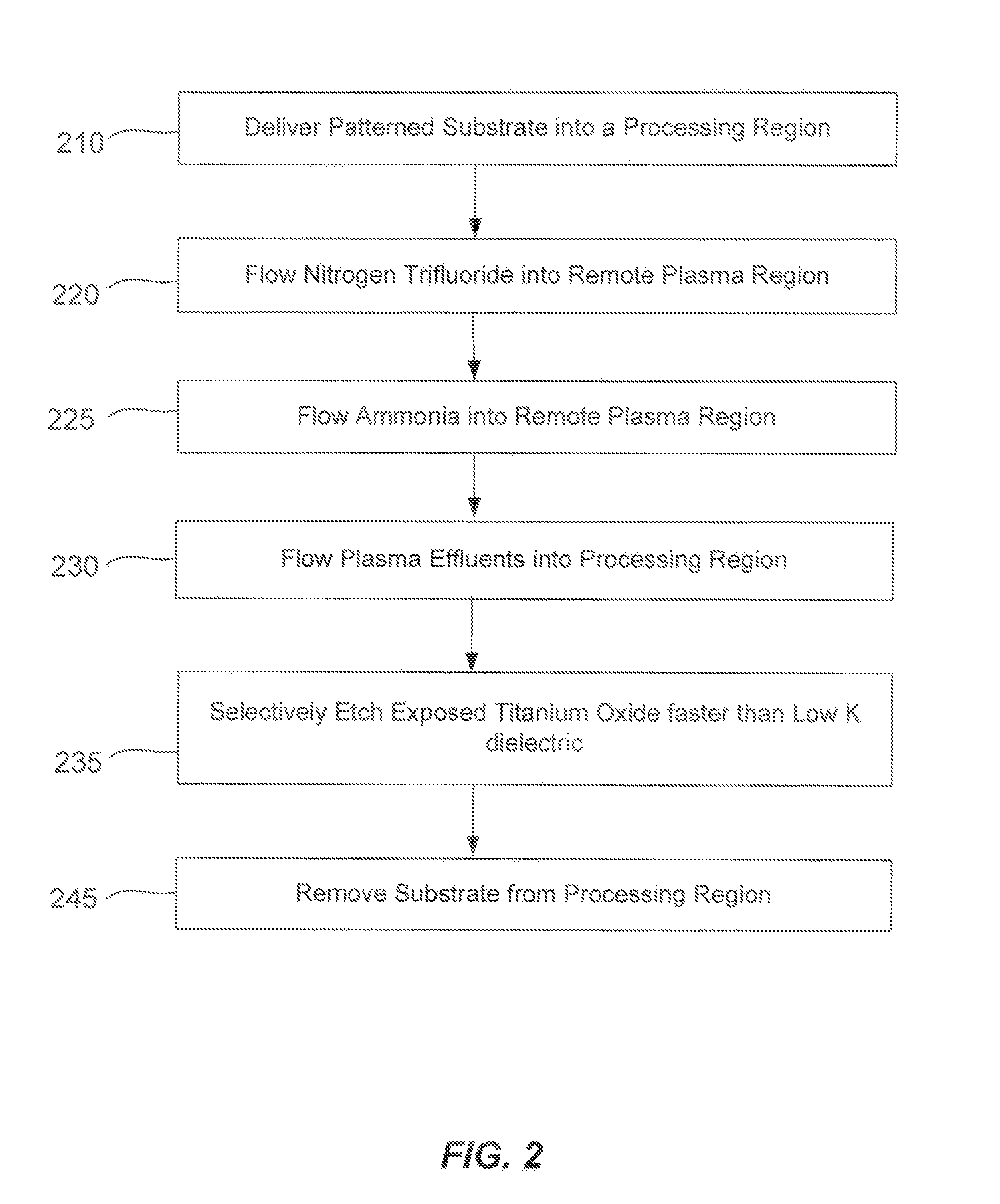Non-local plasma oxide etch
a plasma oxide and etching technology, applied in the field of non-local plasma oxide etching, can solve the problems of less dry etching processes to selectively remove metals and/or their oxidation, and few options to selectively etch silicon nitride raster than silicon, and achieve high titanium oxide selectivity
- Summary
- Abstract
- Description
- Claims
- Application Information
AI Technical Summary
Benefits of technology
Problems solved by technology
Method used
Image
Examples
Embodiment Construction
[0016]A method of etching exposed titanium oxide on heterogeneous structures is described and includes a remote plasma etch formed from a fluorine-containing precursor. Plasma effluents from the remote plasma are flowed into a substrate processing region where the plasma effluents may combine with a nitrogen-containing precursor such as an amine (N:) containing precursor. Reactants thereby produced etch the patterned heterogeneous structures with high titanium oxide selectivity while the substrate is at elevated temperature. Titanium oxide etch may alternatively involve supplying a fluorine-containing precursor and a source of nitrogen-and-hydrogen-containing precursor to the remote plasma. The methods may be used to remove titanium oxide while removing little or no low-K dielectric, polysilicon, silicon nitride or titanium nitride.
[0017]In order to better understand and appreciate the invention, reference is now made to FIG. 1 which is a flow chart of a titanium oxide selective etc...
PUM
 Login to View More
Login to View More Abstract
Description
Claims
Application Information
 Login to View More
Login to View More - R&D
- Intellectual Property
- Life Sciences
- Materials
- Tech Scout
- Unparalleled Data Quality
- Higher Quality Content
- 60% Fewer Hallucinations
Browse by: Latest US Patents, China's latest patents, Technical Efficacy Thesaurus, Application Domain, Technology Topic, Popular Technical Reports.
© 2025 PatSnap. All rights reserved.Legal|Privacy policy|Modern Slavery Act Transparency Statement|Sitemap|About US| Contact US: help@patsnap.com



